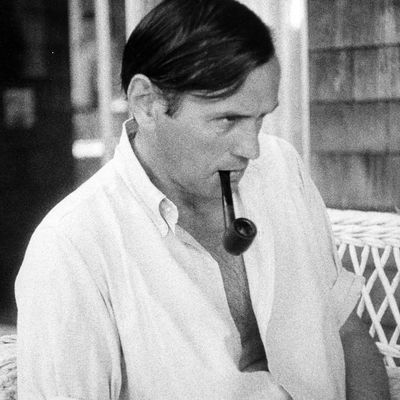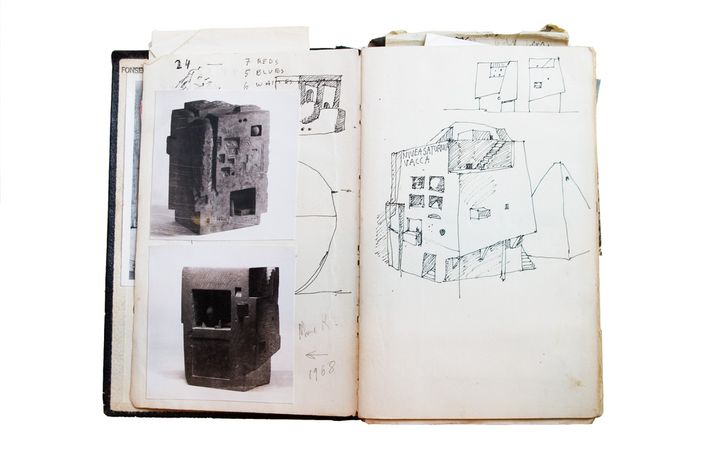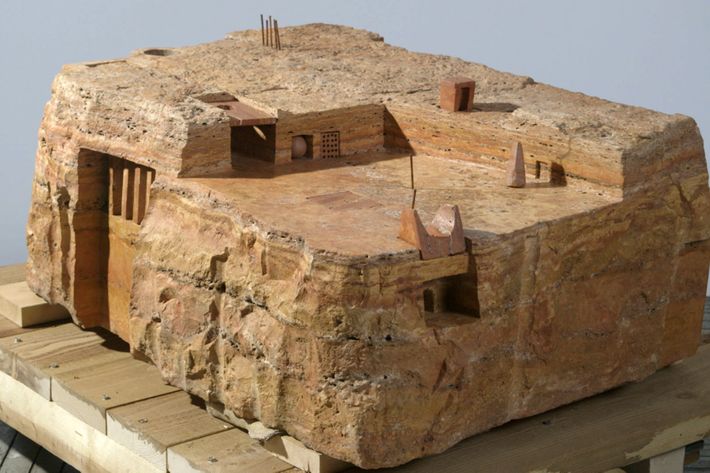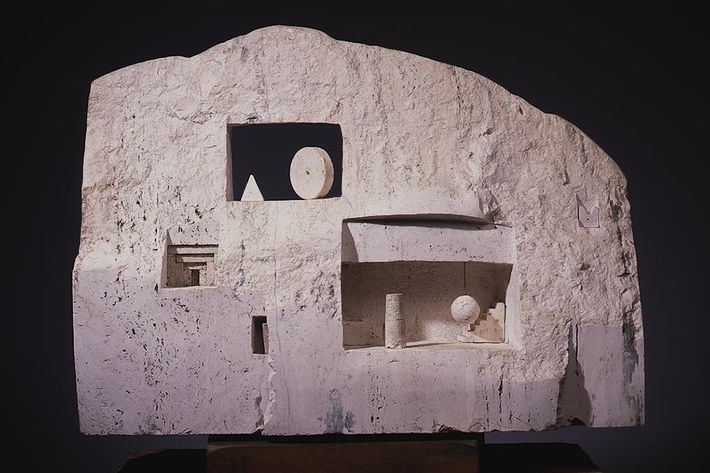
The sculptures of Gonzalo Fonseca ÔÇö hand-carved blocks of marble and limestone riddled with secret compartments, moveable pieces, mysterious emblems, and tiny staircases ÔÇö look like Paleolithic dollhouses designed by M.C. Escher. They donÔÇÖt quite make sense, but they radiate an internal logic so seductive itÔÇÖs hard not to feel as though you once encountered them in a dream, wandering through the works like abandoned cities.
While Fonseca enjoyed a one-man show at the Jewish Museum in 1979 and represented his native Uruguay in the 1990 Venice Biennale, after his death in 1997, his work has lapsed into obscurity. A forgotten man who made mazes, Fonseca could have emerged from the pages of Jorge Luis Borges.
The lost artist is poised to make a dramatic resurgence, however, with a new documentary directed by Michael Gregory. Slated for the 2016 festival circuit, the film is one prong of a full-blown Fonseca renaissance. His son, the abstract painter Caio Fonseca, is planning an exhibition of his fatherÔÇÖs oeuvre at a major New York museum, and there will be lush new books and a website devoted to the work.

FonsecaÔÇÖs notebooks are a testament to his manifold passions. Transliterations of the Greek alphabet follow sketches of bird-headed characters one can imagine adorning cave walls, and excerpts from literature written in a half-dozen languages.
ÔÇ£The impression I get is that youÔÇÖd show up, and suddenly youÔÇÖd be hearing stories about ancient Egyptian mining techniques or Renaissance architects or the root of a word,ÔÇØ Gregory said. ÔÇ£That was the world he lived in, and he was able to make that exciting, and I think his work does, too.ÔÇØ
ÔÇ£Thank God he wasnÔÇÖt boring, because he loved to regurgitate everything that he read,ÔÇØ said Caio, describing his father via FaceTime from his home in Pietrasanta, Italy. ÔÇ£He was encyclopedic about archaeology, history, linguistics, so many other subjects.ÔÇØ
The artist didnÔÇÖt court celebrity during his lifetime and sold the bare minimum number of paintings and sculptures to keep going, according to Caio. Instead, he raised four children, devoted himself to the work and to reading voraciously, and was known to occasionally burst into pizza places belting opera to amuse the bambini.
Decades elapsed between New York gallery shows, and he didnÔÇÖt mind.
Chasing fame ÔÇ£rubbed him the wrong way,ÔÇØ Gregory said. (Now, of course, in our post-sellout age, chasing fame is something people seem to do without compunction, with so many artists obligated to climb the ranks through rabid self-promotion, splashy shows, PR machines, price hikes, and compulsively maintained Instagram accounts.)
We caught up with Gregory on the docÔÇÖs final day of shooting, a breezy May morning that marked the end of 13 months spent searching for material in Montevideo, where Fonseca was born in 1922; New York, where he raised his children; and Seravezza, Italy, where he died of a stroke. Muted sounds wafted through the tall windows of CaioÔÇÖs studio, which was serving as a set, but it was mostly quiet. FonsecaÔÇÖs work inspires an almost meditative calm, and the small crew spoke in hushed tones as they set up slow zooms and tracking shots.
Gregory was familiar with the airy, paint-splattered space. He spent hours in the studio while directing a documentary on Caio, Painter: Caio Fonseca, in 2011.
The narrow floorboards creaked as Gregory and his team carried the cryptic sculptures, some weighing 15 pounds, others several thousand, in front of a white seamless background to be filmed. Fonseca carved many of his sculptures out of slabs salvaged from demolished city buildings. He never used an assistant. The crew exhumed more than a dozen of the sculptures from storage upstate, where theyÔÇÖve languished unseen for years. Fonseca kept all the best works, according to Caio, and they rested on plinths and wheeled pallets, circling the small film crew like stones from a fallen temple.

One sculpture, a large orange block of Persian travertine striated like a sunset, stood in the corner. With its rough-hewn sides and crowning plateau, Piazza (1985) looks almost like a miniature mesa, but the rock is studded with mysterious alcoves, entryways, and grates. Suspended in a small recess carved into one side, an almond-shaped stone hangs like a bell. Other pieces feature trapdoors, impossible to open without an unkinked paper clip, which reveal secret shrines containing cones tenderly set into custom niches.
The sculptures feel like the moments in history no one recorded, lost manuscripts and events that ÔÇö if known to scholars ÔÇö would alter our understanding of entire civilizations. During FonsecaÔÇÖs lifetime, his works were often described as ÔÇ£archaeological,ÔÇØ but theyÔÇÖre less explicitly so than the miniature cities fashioned in unfired clay by Charles Simonds, whose ÔÇ£dwellingsÔÇØ studded the stairwells of the Marcel Breuer Building. The works contain far-reaching evocations of history and myth, as well as a healthy sense of humor ÔÇö which, again, spiritually align him with Borges more than any peer in the plastic arts.

In March, the crew traveled to Uruguay, where Fonseca studied at the Torres-Garc├¡a taller, the workshop founded by the Spanish-Uruguayan artist Joaqu├¡n Torres-Garc├¡a. Gregory interviewed an eclectic cast of characters there, ranging from ├üngel Kalenberg, the former director of the National Museum of Visual Arts in Montevideo, to FonsecaÔÇÖs fiery octogenarian sister, who hosts a daily feminist radio show. Following scraps of information and leads picked up along the way, they met with sources in late-night caf├®s and in libraries crammed with yellowed volumes and artifacts illuminated by shafts of sunlight swirling with dust. The archives, Gregory said, were ÔÇ£straight out of Gabriel Garc├¡a M├írquez.ÔÇØ
Caio is hopeful that the film will reignite his fatherÔÇÖs renown. As the project progressed, the painter has been stuck by the way all sorts of people┬á ÔÇö ÔÇ£from the FedEx guy to museum curators,ÔÇØ he said ÔÇö have reacted to the little-seen sculptures.
ÔÇ£ItÔÇÖs surprising to me because IÔÇÖd think it would take a little time or preparation, but people connect so directly with the work, maybe because itÔÇÖs so universal,ÔÇØ said Caio. ÔÇ£ItÔÇÖs beautiful how alive the work is. I think he was very conscious that working in stone would make these lasting objects.ÔÇØ

